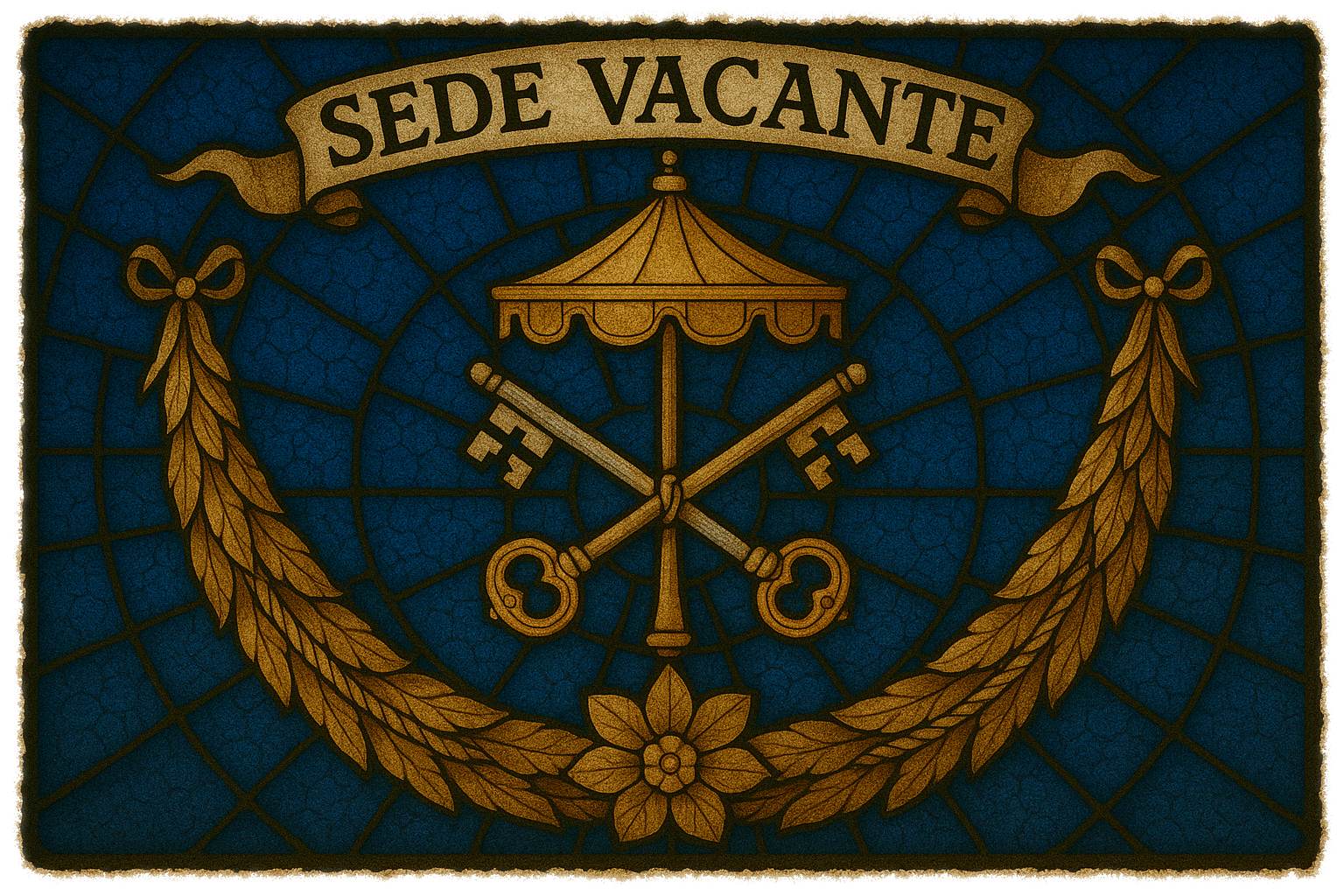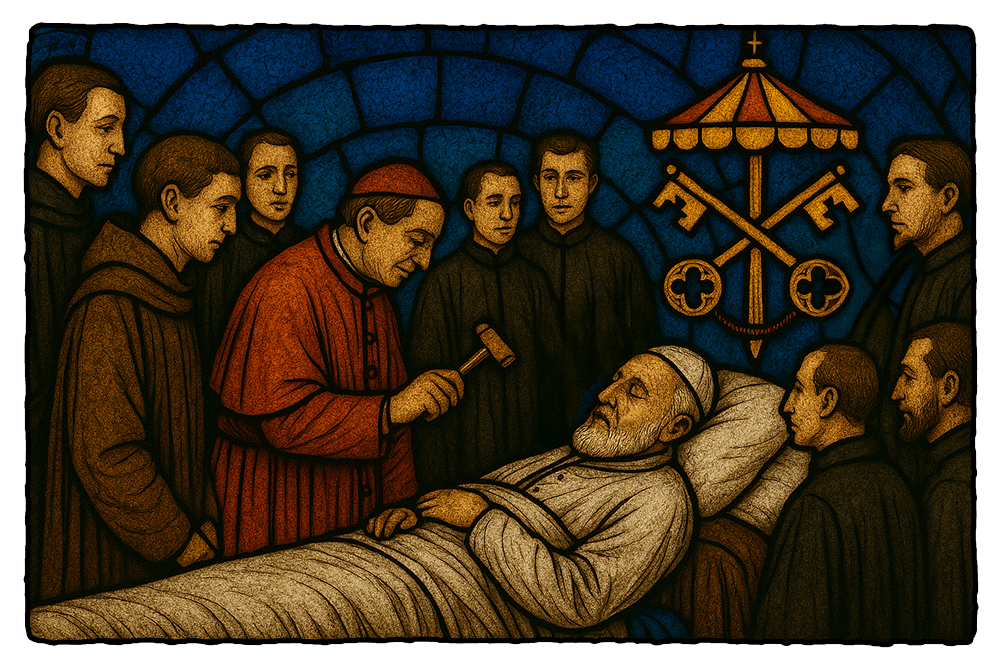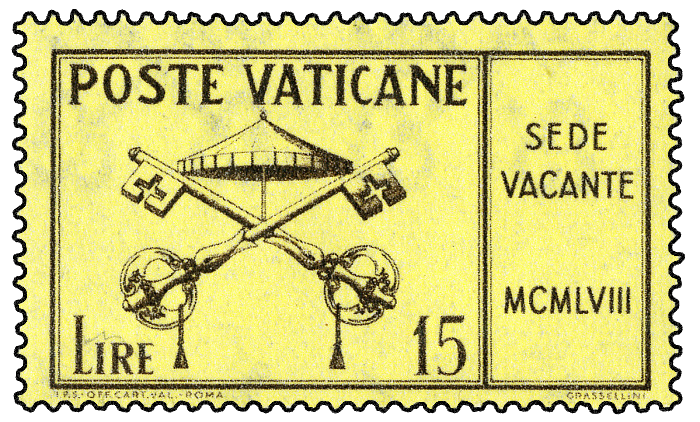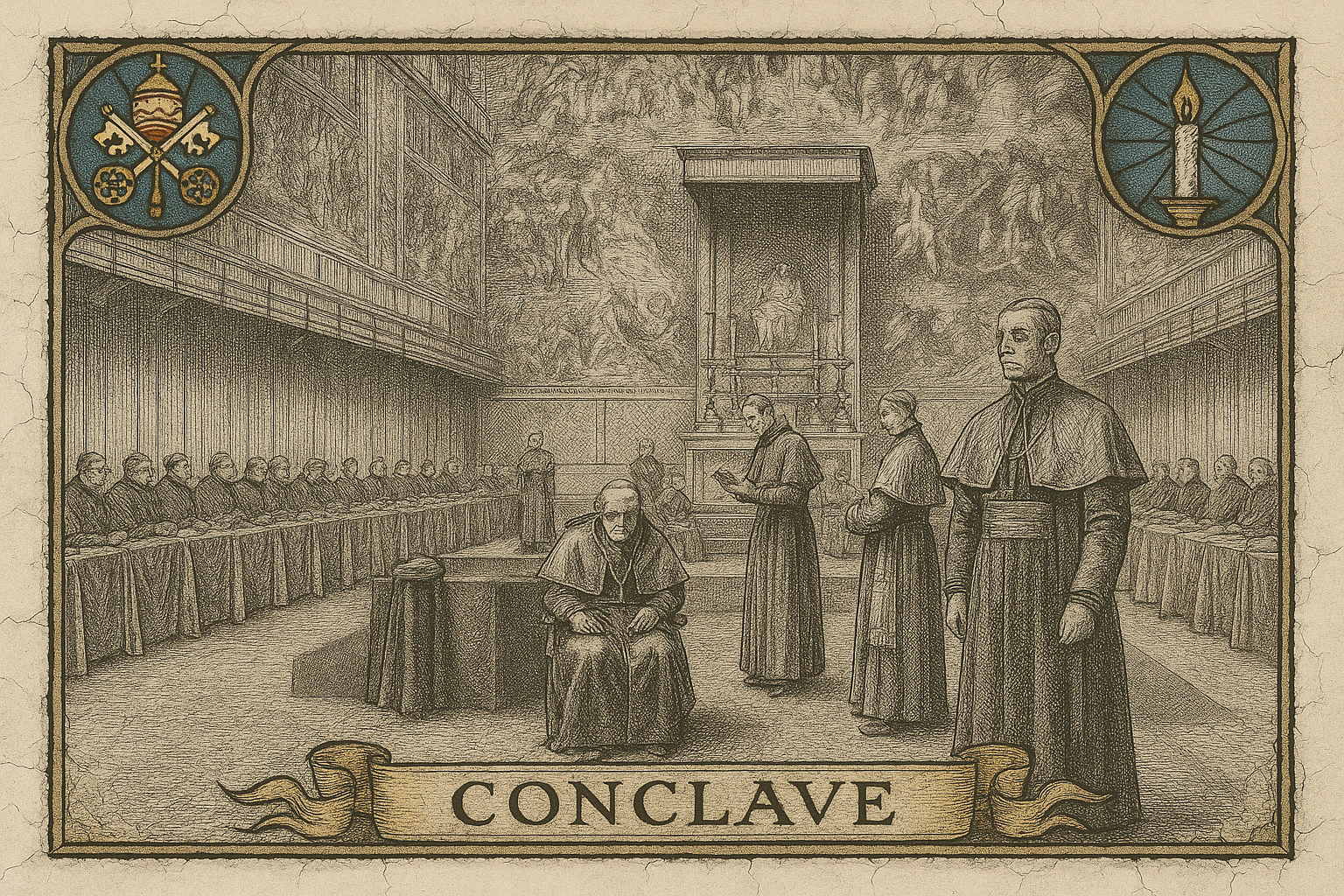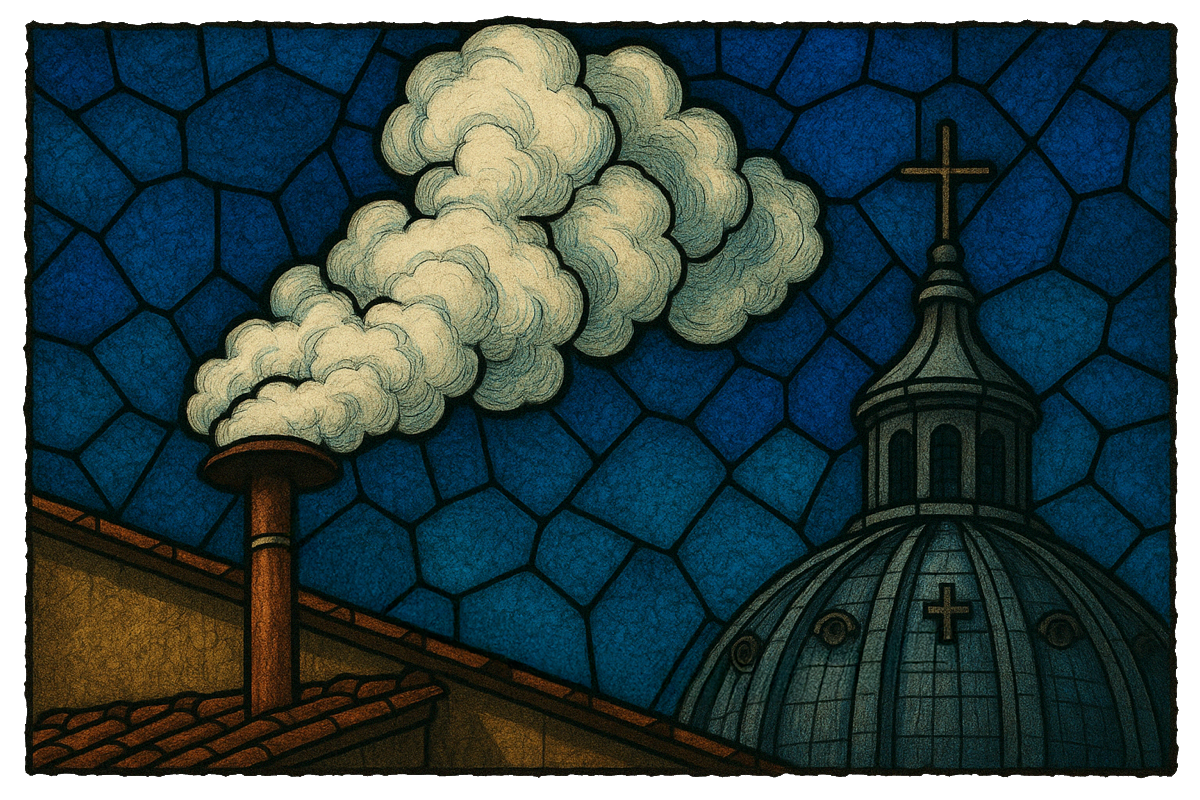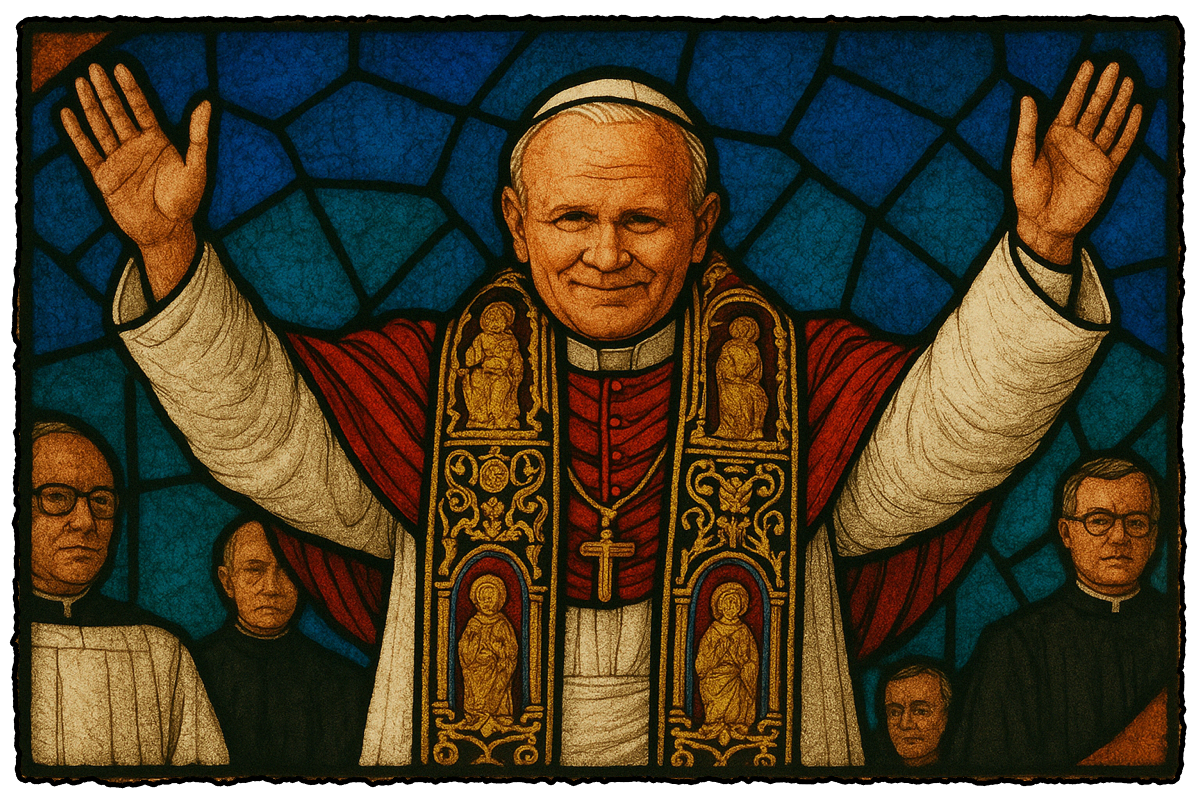Sede Vacante: The Papal Interregnum Begins
With the death of Pope Francis, the Catholic Church enters the period known as 'sede vacante.' What does this mean, and what happens next?
The Catholic Church has entered the period known as “sede vacante” (literally “vacant seat”) following the death of Pope Francis on April 21, 2025. This ancient tradition, marking the time between popes, brings with it a series of protocols, traditions, and ceremonies that have evolved over centuries. As the Church mourns its shepherd, complex mechanisms are already in motion to select his successor.
The Initiation of Sede Vacante
When a pope dies a precise sequence of events unfolds that has been refined over two millennia. The process begins with the formal verification of the pope’s death by the Camerlengo (Chamberlain), currently Cardinal Kevin Farrell12. Traditionally, the Camerlengo would call the pope by his baptismal name three times while tapping his forehead with a silver hammer to confirm his passing2. This ceremonial verification, while sometimes modified in modern times, represents the official commencement of the sede vacante.
Following confirmation of death, the Camerlengo seals the pope’s private chambers and office3. Among his first ceremonial duties is the destruction of the “Fisherman’s Ring,” the pope’s official signet ring used historically to seal documents2. This symbolic act, performed in the presence of cardinals, marks the definitive end of the papacy and prevents any forgery of papal documents during the interregnum2.
Administrative Transition
During sede vacante, the governance of the Catholic Church falls to the College of Cardinals, though with limited powers14. Most Vatican officials cease their functions, with the notable exceptions of the Camerlengo and the Major Penitentiary4. The Camerlengo becomes the temporary administrator of the Church’s worldly possessions and ensures continuity until a new pope is elected142.
The Church enters a formal nine‑day mourning period known as the “novemdiales,” during which special Masses are celebrated in honor of the deceased pontiff3.
The Pre‑Conclave Period
The College of Cardinals begins holding meetings known as “general congregations” to discuss the state of the Church and prepare for the conclave35. These meetings allow cardinals to become acquainted, discuss challenges facing the Church, and informally assess potential candidates for the papacy.
A unique tradition during sede vacante is the issuance of special postage stamps by the Vatican, valid only during this interim period. These stamps, known as “sede vacante stamps,” have become valuable collectors’ items due to their extremely limited period of validity, sometimes lasting only a few days.
The Conclave: Electing a New Pope
Preparation and Entry
The conclave (from Latin cum clave, “with a key”) typically begins 15–20 days after the pope’s death67. Only cardinals under the age of 80 may participate as electors, currently numbering about 12089.
The process begins with a special Mass invoking the Holy Spirit’s guidance7. The cardinals then process into the Sistine Chapel while chanting the Litany of the Saints5. Before voting commences, each cardinal takes a solemn oath of secrecy and fidelity to the conclave’s procedures95. The Master of Papal Liturgical Celebrations then proclaims Extra omnes! (“Everyone out!”), and all non-cardinals leave the chapel, which is then sealed from the outside world95.
Prior to the conclave, the Sistine Chapel is swept for electronic listening devices, and advanced anti‑bugging technology is installed to ensure complete secrecy105. During the conclave, cardinals are forbidden from communicating with the outside world—no phones, newspapers, television, or internet access is permitted10.
The Voting Process
Voting follows a precise ritual that has remained largely unchanged for centuries. Each cardinal receives a paper ballot with the Latin phrase Eligo in Summum Pontificem (“I elect as Supreme Pontiff”) printed at the top87. After writing their choice on the ballot, each cardinal approaches the altar individually, holds up the folded ballot so it can be seen, and places it in a chalice89.
Three cardinals, chosen randomly as “scrutineers,” count the votes and announce the results811. For a valid election, a candidate must receive two-thirds of the votes116. If no cardinal reaches this threshold, the ballots are burned with special chemicals that produce black smoke visible from St. Peter’s Square, signaling to the waiting world that no pope has been chosen117.
Voting continues with four ballots per day—two in the morning and two in the afternoon—until a pope is elected67. When a candidate finally receives the required two-thirds majority, the ballots are burned with chemicals that produce white smoke, indicating successful election11.
The Proclamation
When a cardinal receives the required votes, the Dean of the College of Cardinals asks him, “Do you accept your canonical election as Supreme Pontiff?”65. Upon acceptance, the cardinal immediately becomes pope65. He chooses his papal name, is dressed in the papal garments, and prepares to be introduced to the world5.
The Cardinal Protodeacon then appears on the central balcony of St. Peter’s Basilica and announces to the waiting crowd, “Habemus Papam!” (“We have a Pope!”)5. He announces the new pope’s name and the papal name he has chosen. The new pontiff then appears on the balcony and imparts his first blessing “Urbi et Orbi” (to the city and to the world)5.
Historical Curiosities of Sede Vacante
The history of sede vacante periods offers fascinating glimpses into the evolution of the Church and its sometimes tumultuous past. The longest interregnum occurred between 1268 and 1271, lasting an extraordinary 2 years and 10 months412. The deadlock was so severe that local authorities in Viterbo, Italy, where the cardinals were meeting, locked them inside the papal palace, reduced their food rations, and even removed the roof to encourage a faster decision512. This extreme situation led Pope Gregory X to establish the conclave system with its strict seclusion rules to prevent future prolonged vacancies12.
Other notable extended vacancies include the period from 1314 to 1316 (2 years, 3 months) caused by conflicts between French and Italian factions412, and the sede vacante of 1415–1417 (2 years, 5 months) during the Western Schism when multiple claimants to the papacy existed simultaneously412.
In contrast, some conclaves have been remarkably brief. The conclave of October 1503 lasted only a few hours, resulting in the election of Pope Julius II2. The 1939 conclave that elected Pope Pius XII concluded in just one day2, while the conclaves electing Pope Benedict XVI (2005) and Pope Francis (2013) each lasted only two days2513.
Modern sede vacante periods have been significantly shorter than historical ones, thanks to clear regulations and improved organization. Pope John Paul II’s death in 2005 led to a sede vacante of 17 days, while Pope Benedict XVI’s resignation in 2013 resulted in a 13‑day vacancy12.
The Significance of Tradition
The elaborate procedures surrounding sede vacante and papal elections reflect the Catholic Church’s blend of spiritual discernment and institutional continuity. These traditions, some dating back nearly a millennium, ensure an orderly transition of authority while allowing for divine guidance in the selection process.
As the world watches the current sede vacante unfold following Pope Francis’s death, the College of Cardinals will soon enter conclave to select his successor. This ancient process, refined through centuries of Church history, continues to fascinate both Catholics and non‑Catholics alike as one of the world’s oldest continuous electoral traditions.
Conclusion
The sede vacante we now witness represents a pivotal moment for the Catholic Church. As Cardinal Farrell performs his duties as Camerlengo and preparations for the upcoming conclave begin, Catholics worldwide enter a period of reflection and anticipation. Within weeks I anticipate, white smoke will rise from the Sistine Chapel chimney, and the words “Habemus Papam” will once again echo across St. Peter’s Square, continuing an unbroken tradition reaching back to the earliest days of the Church.
Footnotes
“Sede Vacante: Pope Francis Has Died — What Happens Next?” Catholic News Agency ↩︎ ↩︎2 ↩︎3
“Papal Conclave” Wikipedia oai_citation_attribution:0‡Wikipedia ↩︎ ↩︎2 ↩︎3 ↩︎4 ↩︎5 ↩︎6 ↩︎7 ↩︎8
“How a New Pope Is Chosen—and Who It Could Be,” TIME ↩︎ ↩︎2 ↩︎3 ↩︎4 ↩︎5 ↩︎6 ↩︎7 ↩︎8 ↩︎9 ↩︎10 ↩︎11 ↩︎12
“What Is Papal Conclave & How Long Does It Last?,” FOX61 ↩︎ ↩︎2 ↩︎3 ↩︎4 ↩︎5
“Conclaves Through Time: The Long and the Short,” Euronews ↩︎
